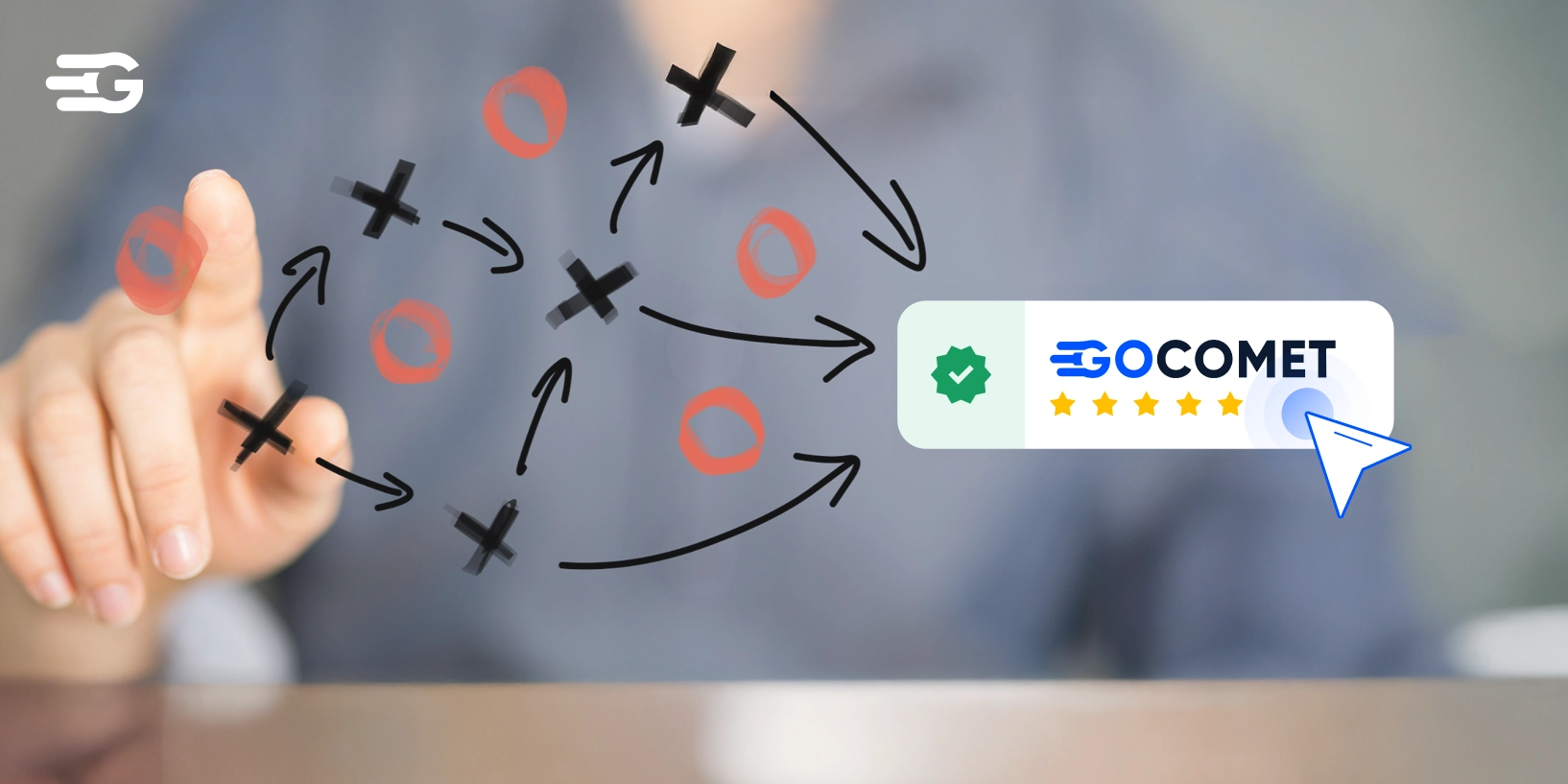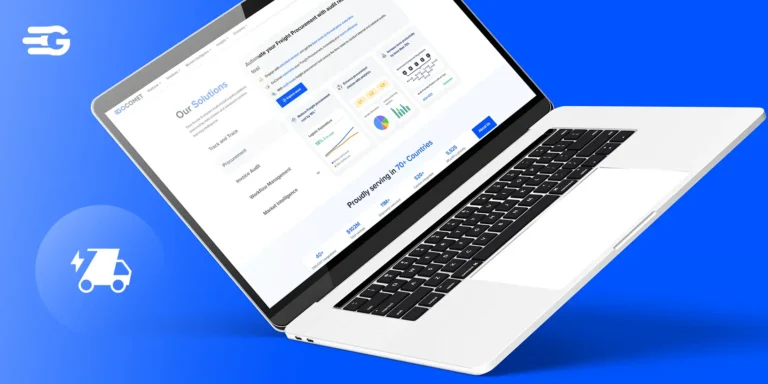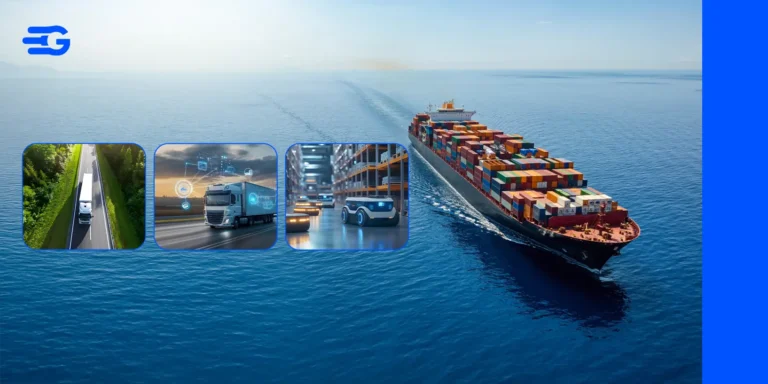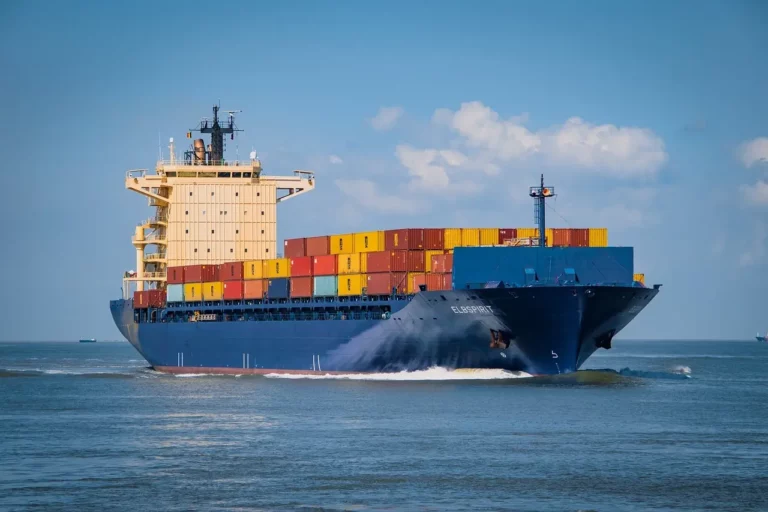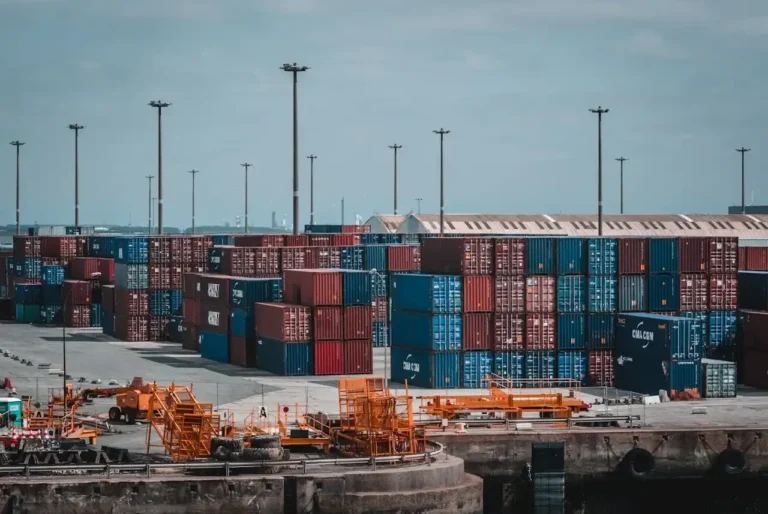Actionable Playbooks for Decision Makers: Selecting the Right TMS in 2025
The transportation management landscape is evolving rapidly, driven by technological advancements and shifting global dynamics. A Transportation Management System (TMS) is no longer a luxury but a necessity for businesses managing complex supply chains. Selecting the right TMS requires a structured approach that aligns with operational needs, industry challenges, and future scalability.
Modern supply chains are vulnerable to disruptions such as geopolitical conflicts, trade regulations, and logistical bottlenecks. By selecting the right TMS, businesses can enhance agility, allowing them to optimize operations, reroute shipments, and mitigate financial losses.
Industry Challenges Demonstrating the Need for a TMS:
Trade Regulations: Unpredictable tariff changes, like those seen under the Trump administration, necessitate flexible supply chain strategies.
Logistical Disruptions: The Suez Canal blockage and recent Red Sea crises underscore the importance of real-time rerouting capabilities.
Market Volatility: Port congestion, labor strikes, and natural disasters require rapid decision-making and adaptive logistics.
Key Trends Shaping TMS Selection
- AI & Predictive Analytics: Enhances forecasting, demand planning, and route optimization.
- Cloud-Based Scalability: Provides flexible, cost-effective solutions adaptable to business growth.
- IoT & Real-Time Visibility: Improves tracking accuracy and supply chain responsiveness.
- Sustainability Tools: Supports carbon footprint reduction and compliance with green regulations.
Selecting the right TMS in 2025 requires a balance between technological capability, operational needs, and future adaptability. Decision-makers must evaluate solutions that offer automation, real-time intelligence, and compliance support to ensure long-term efficiency and resilience.
Also Read: 13 Best TMS Software in 2025
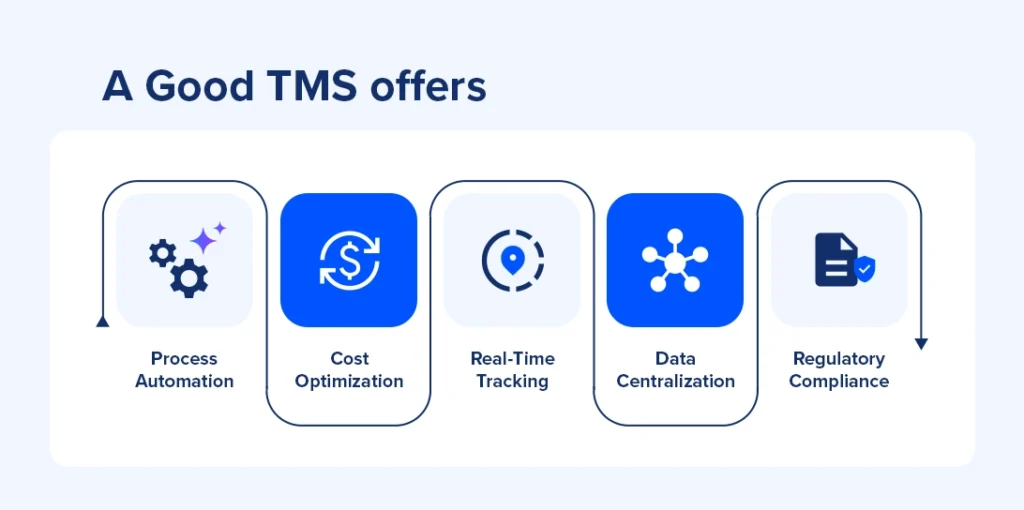
Step-by-Step Playbook for Selecting the Right TMS
By following this playbook, decision-makers can be confident about selecting the right TMS that aligns with their strategic goals, enhances supply chain efficiency, and ensures long-term success.
Step 1: Define Business Objectives and Requirements
Before selecting the right TMS, decision-makers must clearly define their business objectives and operational requirements. The first step is identifying key pain points within the existing supply chain.
Are high freight costs impacting the bottom line? Is there a lack of visibility into shipments? Are inefficiencies in carrier management leading to service disruptions? Compliance challenges and regulatory complexities also need to be considered.
Once pain points are identified, it is crucial to establish clear, measurable goals. Businesses need to define success metrics such as reducing transportation costs by a specific percentage, improving delivery times to meet customer expectations, or enhancing customer satisfaction through streamlined logistics.
Be sure to take into account industry specific needs when selecting the right TMS. A retail company, for example, may prioritize last-mile delivery optimization, while a pharmaceutical firm requires stringent compliance tracking.
Step 2: Identify Key Features and Capabilities to Prioritize in 2025
While selecting the right TMS, business need to ensure it includes essential features that enhance operational efficiency and optimize supply chain performance:
Real-time shipment tracking and visibility: Allows businesses to monitor freight movement, proactively address delays, and ensure end-to-end transparency.
Predictive analytics: Leverages AI and machine learning to analyze trends, optimize routes, and provide data-driven insights that enhance decision-making.
Automated freight rate benchmarking and tendering: Streamlines carrier selection by comparing market rates in real time, ensuring cost-effective transportation options.
Seamless ERP and WMS integration: Enables smooth data flow between different enterprise systems, reducing manual data entry and operational silos.
Scalable architecture: Ensures the system can support business growth, handling increasing volumes and complexity as the company expands.
Beyond these foundational capabilities, emerging technologies are revolutionizing TMS functionality. AI-powered delay management and dynamic route optimization enable companies to make rapid adjustments to shipment paths, avoiding bottlenecks and reducing transit times.
Blockchain integration enhances security and transparency in transactions, ensuring accurate documentation and fraud prevention. Sustainability tracking tools help businesses measure and reduce their carbon footprint, aligning with environmental regulations and corporate sustainability goals.
Mobile accessibility and intuitive user interfaces improve adoption rates, allowing logistics teams to manage shipments seamlessly from any location. By prioritizing these advanced capabilities, businesses can ensure they are selecting the right TMS and the investment delivers long-term value and resilience in an evolving market.
Step 3: Evaluate and Shortlist TMS Vendors
Evaluating multiple vendors using a structured approach ensures that you are selecting the right TMS that aligns with your business needs. By assigning weight to each criterion—such as cost-effectiveness, user experience, and future scalability—you can make an informed decision based on data rather than assumptions.
This scorecard should take into account factors like integration capabilities, customer support, and long-term adaptability to evolving business needs. Prioritizing innovation and responsiveness to industry trends ensures that the selected TMS remains a valuable asset in the long run.
Step 4: Conduct Demos and Proof of Concept (POC)
Request Customized Demos. Ask vendors to demonstrate how their TMS addresses your specific challenges and workflows. Ensure that the demo includes real-world scenarios relevant to your industry, such as high-volume shipping periods, multi-modal transportation, or cross-border logistics.
Pay attention to the system’s user interface, ease of use, and the ability to customize workflows to match your business processes. After selecting the right TMS, implement it on a small scale within a specific department or region to assess its usability, performance, and integration with existing systems.
Establish clear evaluation metrics, such as improvements in transit time, cost reductions, and error minimization. Gather end-user feedback to understand potential challenges and ensure a smooth transition before full-scale deployment.
Step 5: Evaluate Total Cost of Ownership (TCO) and ROI
Consider all costs when selecting the right TMS. Factor in all direct and indirect expenses, including licensing, implementation, training, maintenance, and potential hidden fees.
Costs can vary significantly depending on the TMS provider, deployment model (cloud-based vs. on-premise), and customization requirements. Additionally, businesses must account for integration costs with existing enterprise systems such as ERP and WMS platforms.
Hidden fees may include charges for additional user licenses, premium support services, or upgrades to advanced analytics features. Evaluate potential financial benefits by calculating cost savings from improved carrier negotiations, optimized route planning, and automated workflows.
Efficiency gains from reduced manual errors and streamlined logistics processes can enhance operational productivity. Improved customer service, driven by faster deliveries and real-time tracking, can lead to higher customer retention and brand reputation.
In selecting the right TMS, decision-makers should model different ROI scenarios based on their industry, shipment volume, and projected business growth to fully assess the value of their investment.
Step 6: Ensure a Smooth Implementation and Change Management Process
After selecting the right TMS, it is important to remember that implementation requires a clear plan, effective training, and continuous performance monitoring. Establish a structured roadmap with defined timelines, milestones, and resource allocation to ensure a smooth deployment. Engage stakeholders early, communicate expectations, and address potential risks proactively.
Training is crucial for user adoption, so provide comprehensive sessions, hands-on workshops, and ongoing support. Encourage feedback, conduct pilot testing, and address resistance by highlighting efficiency gains.
Post-implementation, track key performance indicators to measure success and identify areas for improvement. Regular reviews, data-driven optimizations, and system updates will ensure long-term efficiency and scalability.
Why GoComet is the Ideal TMS for 2025 Decision Makers
In an era where efficiency and cost optimization define supply chain success, GoComet stands out as the premier Transportation Management System (TMS) for 2025. Its AI-driven capabilities streamline logistics, enhance visibility, and ensure data-driven decision-making for maximum operational efficiency. If you’re looking to dive deeper into the world of TMS and understand its full potential, check out our guide on Transportation Management Systems.
AI-Powered Freight Cost Optimization
GoComet leverages advanced AI to optimize freight costs through automated rate benchmarking and predictive ETAs. The Freight Optimizer analyzes real-time shipping routes and carrier rates, enabling businesses to secure the most cost-effective and efficient logistics solutions.
Real-Time Shipment Tracking and Delay Management
The Shipment Tracking module provides complete real-time visibility, allowing businesses to monitor shipments at every stage. Its Delay Management feature proactively detects potential disruptions and recommends alternative routes to minimize delivery impact.
Predictive ETA and Geofencing for Proactive Logistics
GoTrack’s Predictive ETA utilizes AI-driven insights and multi-source data integration to provide highly accurate delivery timelines. Geofencing capabilities automate milestone alerts, ensuring seamless communication and enabling rapid adjustments when needed.
Automated Notifications and Intelligent Data Capture
GoComet automates shipment status updates, keeping stakeholders informed of any changes or delays. Its Intelligent Data Capture system eliminates manual entry errors, ensuring accurate and up-to-date logistics data for improved decision-making.
Seamless Integration and User-Friendly Experience
Designed for ease of use, GoComet features an intuitive interface that requires minimal training. It integrates seamlessly with ERP and WMS systems, ensuring smooth adoption and synchronized workflows across the supply chain.
Enhanced Procurement and Invoicing with GoProcure and GoInvoice
GoComet extends its value through GoProcure, a smart procurement tool that simplifies supplier selection and cost negotiation, and GoInvoice, which automates invoice validation and reconciliation, reducing discrepancies and accelerating payment cycles. These integrated solutions enhance end-to-end logistics management, ensuring efficiency from procurement to final delivery.
With AI-driven automation, real-time insights, and seamless integration, businesses can be confident in selecting the right TMS to optimize logistics and drive cost savings in 2025 – GoComet!
Selecting the right TMS doesn’t just mean optimize logistics operations—it directly contributes to happier and more satisfied customers by ensuring timely deliveries, transparent communication, and consistent service quality. GoComet’s comprehensive suite of tools empowers businesses to streamline operations, reduce costs, and enhance customer relationships, making it the ideal choice for decision-makers in 2025.
GoComet helped a leading polymer company improve its customer satisfaction by providing real-time shipment tracking and predictive analytics, leading to reduced delays and enhanced service reliability. You can do so too—take a demo today!
